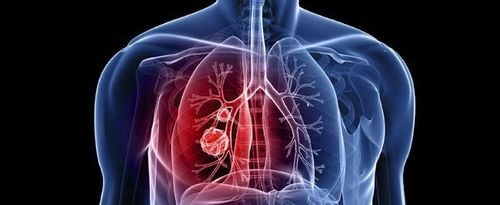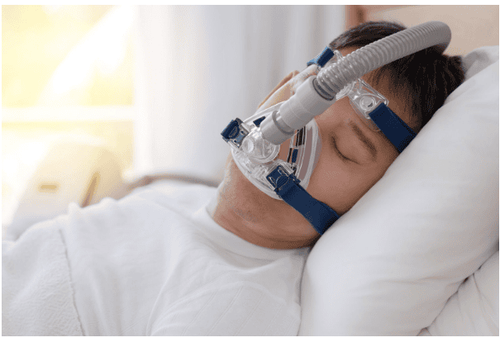This is an automatically translated article.
This article is professionally consulted by Master, Doctor Nguyen Le Duc Hoang - Emergency Medicine Doctor - Emergency Department - Vinmec Danang International Hospital.The technique of breathing oxygen with eyeglass frames is often performed for patients who need oxygen. The purpose of performing this technique is to provide inhaled air with high oxygen content for patients to breathe easily, meeting the metabolic needs of the body.
1. Why do you need to perform oxygen breathing through the frames?
1.1 Learn about respiration Respiration is the process of gas exchange between the body and the outside environment. Thanks to gas exchange, living organisms can absorb oxygen from the external environment and expel carbon dioxide from the body. The respiratory process consists of 4 stages:
Ventilation: Air goes from the outside into the alveoli and vice versa; Diffusion: Oxygen from the alveoli goes to the capillaries through the alveolar membrane, carbon dioxide moves back; Transport: Carry oxygen from alveolar capillary blood to red blood cells and plasma; Organizational respiration: Oxygen from outside enters cells, used by respiratory enzymes. The above stages are closely related and affect each other. If one of the above stages is disturbed, it will lead to respiratory disorders, causing a lack of oxygen for the whole body.
1.2 Causes - symptoms of hypoxia Causes of hypoxia include: Obstacles in the respiratory tract (respiratory tumors, pharyngeal edema, choking, aspiration, diphtheria, bronchitis, pneumonia, asthma, edema of bronchial smooth muscles, increased secretion of respiratory mucus,...); volume restriction of the thorax (paralysis of the respiratory muscles, thoracic trauma, disease causing pneumothorax or pleural effusion); diseases that interfere with the diffusion of gas in the lungs (emphysema, pneumonia, acute pulmonary edema, bronchopneumonia), diseases that disrupt oxygen transport (anemia, heart failure, congenital heart disease, etc.). ..).
Symptoms of hypoxia include: Shortness of breath, anxiety, restlessness, panic, struggle, irritability, decreased vision, lethargy, confusion, decreased muscle tone and coordination of muscle groups. In the first stage, the patient shows signs of blood pressure, pulse and respiratory rate, heart rate increases; In later stages, the patient has symptoms of shortness of breath, cyanosis, decreased blood pressure and pulse.
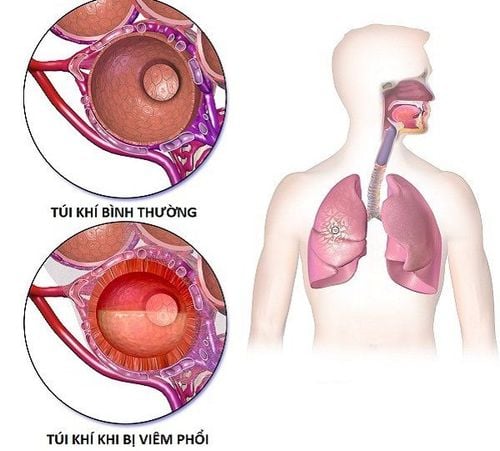
1.3 Performing oxygen therapy through the frames Oxygen therapy is a method of providing breathing air to the patient with an oxygen concentration above 21%. This is a necessary measure for cases of hypoxia, avoiding the risk of hypoxia causing damage to body tissues (especially brain cells).
Orthopedic oxygen breathing is a method of increasing the concentration of inhaled oxygen (FiO2) by means of a nasal frame. This measure helps to provide enough oxygen needed for the patient's metabolic needs. Eyeglass oxygen is a simple procedure, often the first choice for patients requiring oxygen.
The glasses-frame oxygen breathing apparatus has a relatively simple structure, is inserted in the upper lip of the patient, has 2 slightly curved prongs that are placed into the patient's 2 nostrils. Oxygen flow rate of eyeglass frames 1 - 6 liters/min. The amount of FiO2 will vary depending on the patient's respiratory rate and Vt.
Oxygen frame has the advantage of being easy to use, take care of, and accept it by patients because you can breathe oxygen while eating and talking. The disadvantage is that it is easy to block the outlet of the frame due to secretions, so it needs to be checked regularly; can cause nasal congestion, discomfort to the patient, and low levels of inhaled oxygen.
2. Details of the technical procedure for breathing oxygen with glasses frames in adults
2.1 Indications Eyeglass-framed oxygen ventilation is the procedure of choice initially for patients with indications for oxygen, including:
Mild or moderate hypoxia: PaO2 < 60mmHg, SaO2<90%; Increase myocardial work; Increased work of respiration; Pulmonary arterial hypertension. 2.2 Contraindications The use of oxygen in the frame has no absolute contraindications, but only a relative contraindication in cases of nasal narrowing or obstruction due to mucus or polyps in the nose.
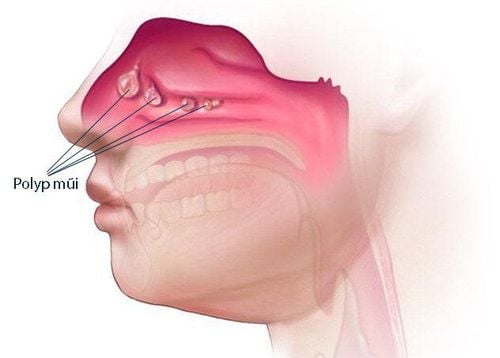
2.3 Preparation for implementation Personnel implementation: Nursing; Technical means: Oxygen glasses frames, humidifiers connected to the central oxygen system; Patient: Explain the procedure (benefit - risk - procedure), encourage patient cooperation, ensure clear airway, check clinical signs and indicators; Medical records: Prepare fully according to regulations. 2.4 Carrying out oxygen breathing through the frames Turn on the source of oxygen to ensure normal operation; Check, make sure the humidifier has enough water; Adjust oxygen flow to suit each patient, usually set at 1 - 6 liters/min; Connect the oxygen wire system to the eyeglass frame for the patient, fix the tube. 2.5 Follow-up after using oxygen through eyeglasses Assess the patient's response after oxygen in clinical (respiratory, cardiovascular and neurological) and blood gas (indices PaO2, SaO2, PaCO2,...) ; Assess the patient's tolerance to the oxygen respirator; Record the manual. 2.6 Risk of Complications The oxygen technique with the frames usually does not have serious complications. Patients may experience some mild complications such as:
Hypoventilation due to oxygen: Can be seen in patients with chronic obstructive pulmonary disease; Bacterial superinfection from oxygen breathing apparatus; Dry airway mucosa. With the above problems, medical staff will handle according to the standard protocol.
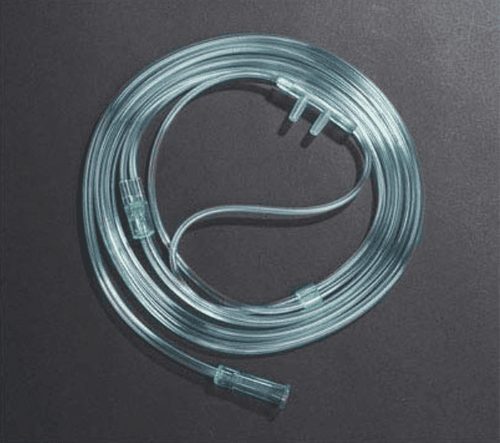
3. Technical details of oxygen breathing through eyeglasses in children
3.1 Indications In children who need oxygen, use oxygen in the eyeglass frame when:
The child can breathe on his own through the nose; Inspiratory oxygen demand (FiO2) is less than 40%. 3.2 Contraindications The need for inspiratory oxygen (FiO2) is higher than 40%; The child's nasal mucosa is heavily congested, edematous, and easy to bleed; The child is unable to breathe through the nose on their own due to severe narrowing of the posterior nostril or stops bleeding in both nostrils by inserting gauze. 3.3 Preparation of Implementation Personnel: Nurses or technicians; Technical facilities: Oxygen flow meter column, nose bridge suitable for children, clean water and SpO2 meter; Patient: The child is placed on the emergency bed, the upper airway is cleared, the clinical signs and indicators are checked (pulse, respiratory rate, signs of exertion, SpO2 measurement, mucosal skin condition checked. , spirit and other signs); Medical records: Show full personal information and health status of the child before oxygen breathing
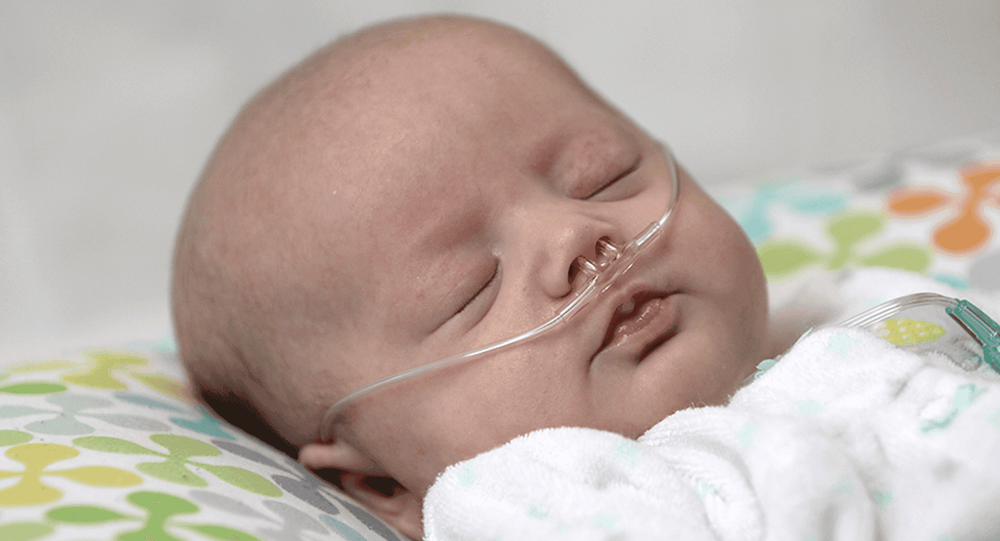
3.4 Performing the procedure Check the record and check the patient, make sure the information matches; Install the oxygen flow meter column to the source; Mount the nosepiece to the oxygen flow meter column; Adjust the required oxygen flow; Check the oxygen output by immersing the tip of the rim into a cup of clean water, there will be bubbles; Put the tip of the frame into the child's nose, fix the frame by looping the wire behind the child's ear, you can choose to fix it under the chin or on the back of the neck depending on the age of the child; Adjust oxygen flow, make sure SpO2 is within the allowable limit. Depending on the age of the child, the oxygen flow will be different. Low-flow rib cage oxygen will not require oxygen humidification, except in some special cases; Change the nose frame for the child every day. 3.5 Post-procedure monitoring During the first 30 minutes of oxygen breathing, it is necessary to continuously monitor the child with SpO2 and heart rate meter, assess the child's breathing rate, skin mucous membranes, exercise level and mental state to adjust the amount of oxygen suitable; When the child breathes oxygen stably, monitor the child's health every 3 hours. Issues to monitor are oxygen junction status, nasal bridge outlet, and infant responsiveness.
3.6 Some complications and how to manage Edema or bleeding causing nasal obstruction: Need to be treated with oxygen transfer; Obstruction of nasal bridge outlet due to secretions: Should be treated by replacing new frames; Nasal obstruction due to secretions: The treatment is to clean and wash the nose daily; The child still has respiratory failure after following the above technique: The best solution is to switch to breathing through a mask. The technique of breathing oxygen with eyeglasses has a relatively simple procedure, but it requires the patient's good cooperation with all the instructions of the doctor to ensure a smooth implementation and reduce the risk of complications.
Periodic health check-ups help to detect diseases early, so that there are treatment plans for optimal results. Currently, Vinmec International General Hospital has general health checkup packages suitable for each age, gender and individual needs of customers with a reasonable price policy, including:
Health checkup package diamond check-up Package Vip check-up package Special check-up package Comprehensive medical check-up package Standard check-up package The results of the patient's examination will be returned to the patient's home. After receiving the results of the general health examination, if you detect diseases that require intensive examination and treatment, you can use services from other specialties at the Hospital with quality treatment and services. outstanding customer service.
Please dial HOTLINE for more information or register for an appointment HERE. Download MyVinmec app to make appointments faster and to manage your bookings easily.





